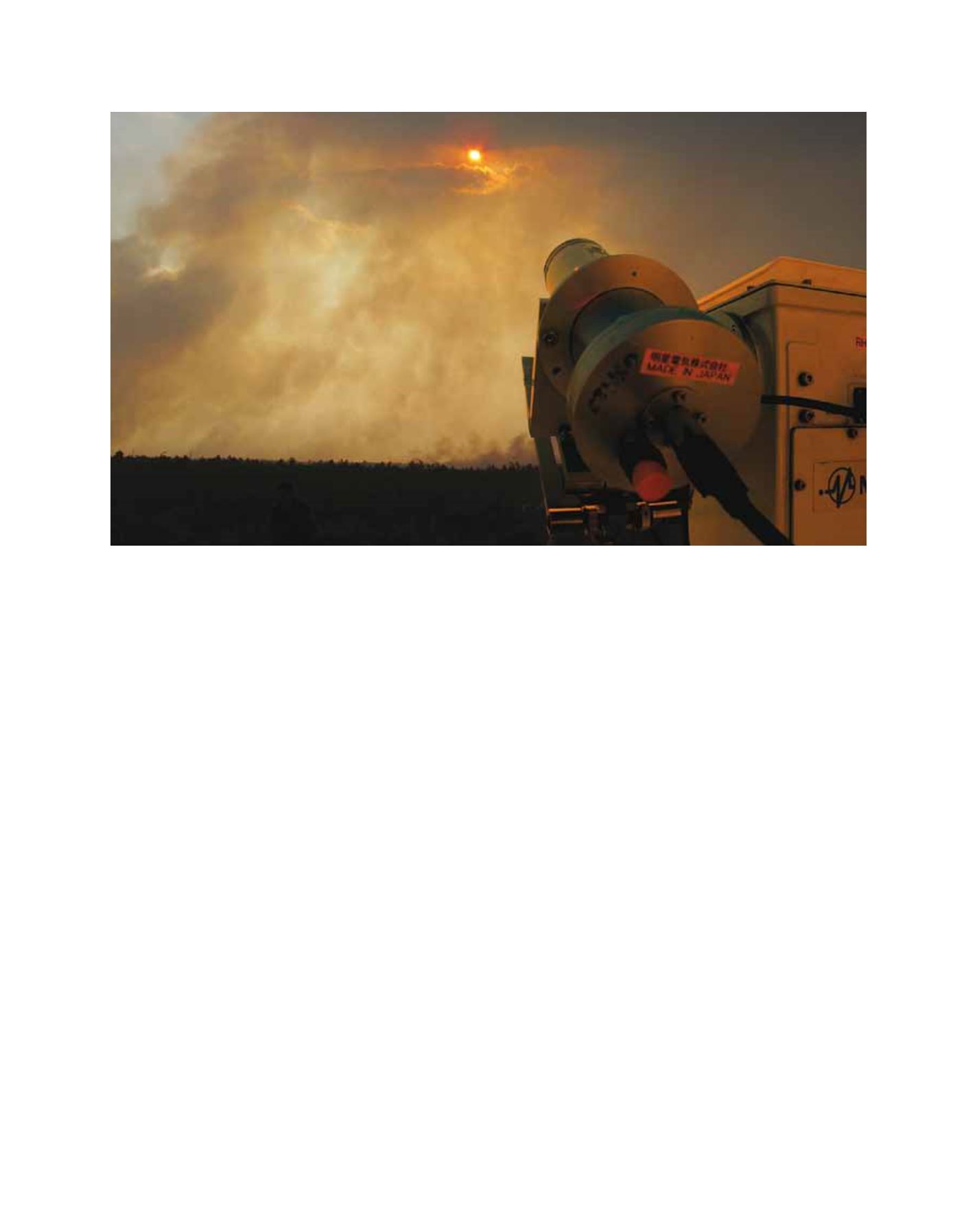

[
] 208
E
cosystems
CO
2
column densitometer, based on optical filtering using a fibre etalon,
are the low initial and running costs compared with existing instruments
such as Fourier transform spectrometer (FTS), its quick installation and
the fact that it performs automatic measurements. Furthermore, the
measurements are not affected by aerosols or cirrus clouds, and meas-
urements are possible if the sun appears through a break in the clouds.
Field applications
Two applications are of particular interest: the vertical distribution of
CO
2
measured by the sonde near Tokyo and a peat and forest fires meas-
urement campaign using the FES-C in Kalimantan Island, Indonesia.
CO
2
vertical profile measurement in the Tokyo area
The CO
2
sonde was used to take measurements at Moriya, which is situ-
ated 35 km north-west of Tokyo. The sonde was launched at 14:30 local
time (LT) on 26November 2011. The ascent rate of the balloonwas about
four metres per second, and the vertical CO
2
measurement resolutionwas
about 300 m. The vertical profile below the atmospheric boundary layer
showed that the CO
2
concentration was high because of intense emission
frommetropolitan Tokyo. The CO
2
concentration above the atmospheric
boundary layer was close to background values at the same latitude. Thus,
the CO
2
sonde data reflect surface emission and absorption.
Peat and forest fires observation campaign in Indonesia
As part of the measurement, reporting and validation (MRV) of carbon
emission reduction activities, Sumitomo Corporation requested us to
evaluate the CO
2
emission from the peat and forest fires in Central
Kalimantan, Indonesia. In this campaign, two sets of FES-C were
deployed parallel to the predominant wind direction and three months
of column density data were automatically obtained. The carbon emis-
sion between the two observation sites was evaluated by considering
the differences between the upstream and downstream
column data and factoring in the wind velocity, which
carries the emitted CO
2
horizontally. Automated and
continuous monitoring has an important advantage
because it is impossible to predict when and where fires
will happen. However, it was difficult to estimate the entire
quantity of emitted CO
2
by using the data from only two
observation points. According to a numeric simulation,
the installation of 16 sets of FES-C would be necessary to
evaluate the CO
2
emission from an area of 2,000 square
kilometres with 10 per cent accuracy.
Further development
Meisei Electric has developed a low-cost, easy-to-operate,
all-weather CO
2
sonde, which is flown on a meteorologi-
cal balloon, to measure the vertical profile of CO
2
from
the ground up to 10 km with an accuracy of about 1
ppm. The sonde has already been delivered to the market
and has been used by Japanese researchers. FES-C that
can measure the CO
2
column density is under develop-
ment. These two developments are financially supported
by JST. Field tests to compare the CO
2
sonde and FES-C
observations with aircraft and FTS observations have
been conducted to confirm their reliability.
Meisei Electric believes that the development of tools to
measure CO
2
emissions and sinks is important to support
the international strategy of greenhouse gas reduction. Direct
surface fluxmeasurements using the chamber or eddy covari-
ance methods and the vertical and horizontal transportation
after surface-atmosphere interactions using a CO
2
balloon
sonde and FES-C can be measured using Meisei products.
The FES-C observing peat and forest fires, in Central Kalimantan, Indonesia
Image: Meisei Electric
















